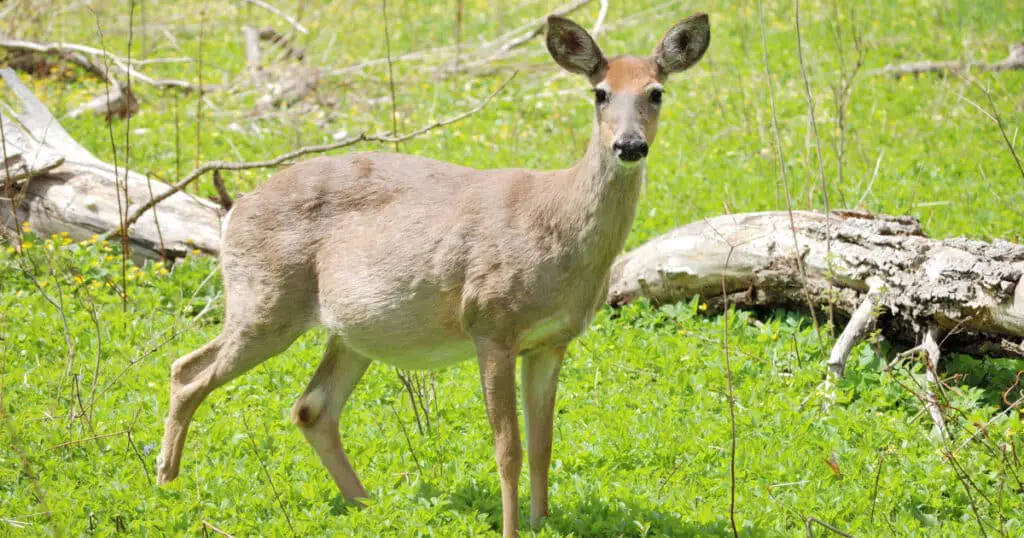The deer gestation period depends on its species. Other factors, such as season, can also play a part in how long deer carry their young before delivery.
If you’re a hunter, it’s important that you understand deer gestation. If you lack this knowledge, then you won’t be able to make the right decisions in order to help ensure that the species and the local population of deer is able to grow and flourish.
So, How Long is the Deer Gestation Period?
In many species of deer, the period of gestation (the time during which a doe is pregnant) lasts between approximately 200 and 205 days. In some species, the day count can go as high as 230 or even 286. Deer are seasonal breeders.
When is the Deer Breeding Season?
Both female and male deer experience significant changes in their levels of hormone (as well as their reproductive organs) before the breeding season begins. The rut, or mating season, for deer takes place in the fall of each year.
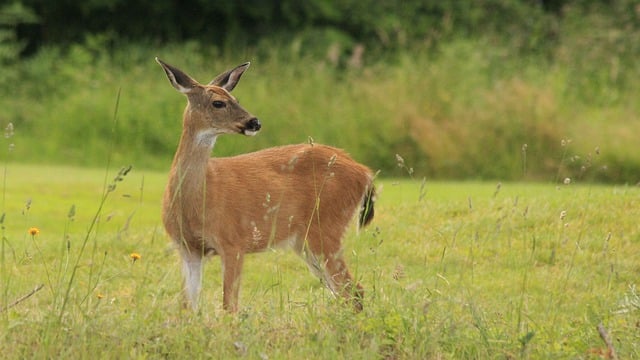
The estrus period for female deer is rather short. It begins in the fall and can take place between October to December for most types of deer. The doe is only able to conceive for a few days each year.
It is difficult to discern whether a deer has just recently become pregnant. It’s only after a minimum of three months of pregnancy that you have any chance of being able to tell whether or not a doe is carrying young by looking at her.
This is why hunters should completely avoid hunting during the gestation season. This is important in order to help ensure the strength and sustainability of deer generations, and it’s part of the reasons why many hunters target male deer (that and their antlers are prized).
Factors Affecting the Deer Gestation Period
A variety of factors can impact the deer gestation periods.
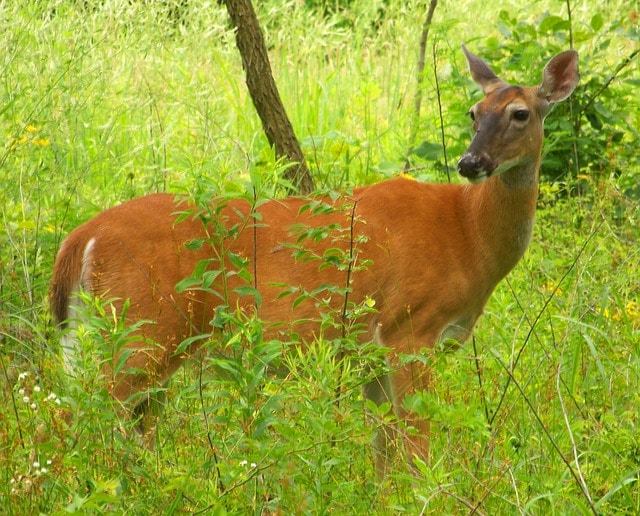
The general guideline for gestation period also varies among the different species of deer:
White Tail Deer Gestation Period
The gestation period for whitetail deer is approximately 200 days. This is because this species tends to be native to cold regions. The whitetail doe can give birth to between one and three fawns each spring. Spring is the ideal period for deer to be born, as that time of year has mild and hospitable conditions with plenty of forage.
Red Deer Gestation Period
Red deer live in northwest Africa, Asia, and other areas of the world. In North America they’re often called Elk. The gestation period of red deer is around 236 days. The female will generally give birth to between one and three fawns (sometimes called calves) later in the spring. Red deer males and females tend to live completely separately except during breeding season.
Roe Deer Gestation Period
Roe deer is a species that is generally found in European countries. Its gestation period is usually about 290 days in length. Roe deer usually give birth to between one and three fawns each May.
Mule Deer Gestation Period
The gestation period for mule deer is about seven months in length. A mule deer female usually gives birth to one fawn in her first pregnancy.
In the United States, female mule deer usually have twins for all their subsequent pregnancies.
Gestation Period of Fallow Deer
Fallow deer can be found in Asia, the United States (especially Texas), and Europe. The Fallow Deer doe’s gestation period is between 230 and 245 days in length.
List of Gestation Period of Different Deer Species
Below is a chart of showing these and other deer species and their gestation periods:
| Deer Species | Gestation Period |
| White-Tail Deer | 201 days |
| Red Deer | 236 days |
| Tufted Deer | 181 days |
| Roe Deer | 290 days |
| Reindeer | 222 days |
| Fallow Deer | 230 days |
| Mule Deer | 203 days |
| Sambar Deer | 246 days |
| Roe Deer | 290 days |
| Moose | 243 days |
| Chital | 227 days |
| Elk | 240-262 days |
| Thorold’s Deer | 263 days |
| Indian Muntjac | 210 days |
| Eld’s Deer | 240 days |
| Indian Hog Deer | 220 days |
| Javan Rusa | 250 days |
| Southern Pudu | 210 days |
| Red Brocket | 225 days |
| Calamian Deer | 224 days |
| Pere David’s Deer | 286 days |
| South Andean Deer | 213 days |
| Fea’s Muntjac | 196 days |
| Hairy Fronted Munjac | 196 days |
| Taruca | 236 days |
| Visayan Spotted Deer | 243 days |
| Brown Brocket | 243 days |
| Siberian Roe Deer | 290 days |
| Barasingha | 245 days |
| Sika Deer | 224 days |
| Reeve’s Muntjac | 214 days |
How Many Fawns Can a Doe Have in Its Lifetime?
There is no way to predict how many fawns a doe will have in its life.
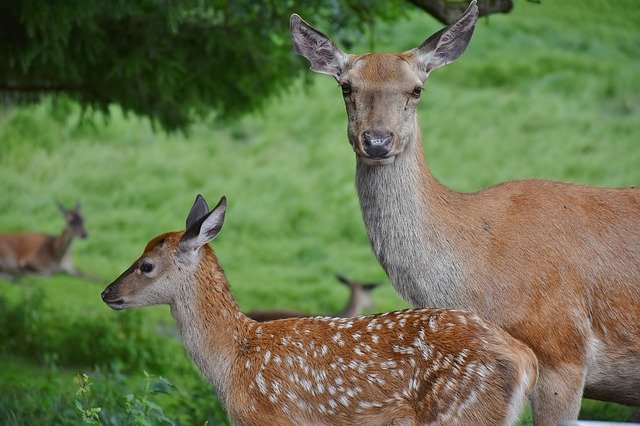
Factors that impact this include the health of the doe and the specific species. Some female deer only have around thee fawns during their lives, but others may have eight or more. Environment and other circumstances often play a part in this.
Fawns grow all of their fur while still in their mother’s womb. As the period of gestation draws to its end, the front legs and head will turn towards the back of the uterus. This is necessary for birth to take place.
The Fawn’s Early Life
Does will usually go to an area away from the herd in order to give birth to their fawns. The spot the doe will choose will usually have a lot of thick vegetation. This is important so that the fawn is properly hidden from any predators that might be around.
After the fawn is born, the doe will lick the fawn to clean off the birth fluid. This is important because the doe needs to remove all the scent she can from the fawn so that predators do not smell it. Within as few as 20 minutes of the fawn being born, the mother will encourage it to stand up.
The fawn will be concealed within vegetation for the first week it is alive. It surprises many people to learn that the mother deer leave their new fawns hidden for most of this early period, but they do it for the fawn’s safety.
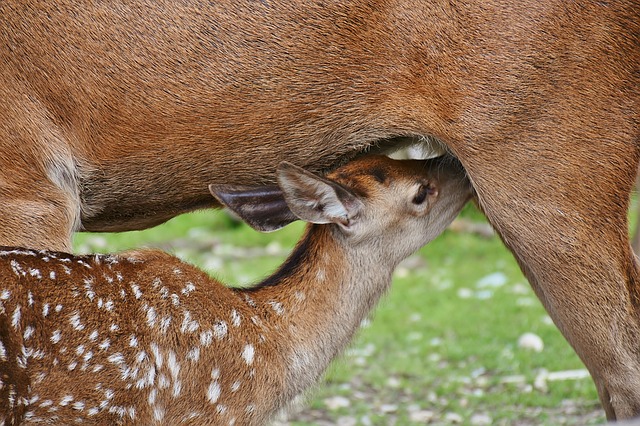
The doe will come back on a regular basis in order to feed the fawn milk. The doe will finally bring the baby back to the herd when it is sufficiently strong.
The fur of a fawn in most deer species has an abundance of white spots. These markings are important because they help the fawn hide effectively in vegetation, making them safer from predators. These spots will remain for up to a year. The only deer that keeps its spots for all its life is the fallow deer.
Hunters Must Understand Deer Reproduction and Gestation
Many fawns will not survive to adulthood, being killed by predators or even hunters. If a deer does reach adulthood, it can live for up to 20 years in the wild if it is lucky and avoids being eaten by a predator or shot by a hunter. Deer can live as long as 30 years if they live in captivity.
It is every deer hunter’s responsibility to understand deer reproduction and gestation. If you make ill-informed decisions with your hunting methods and timing, you may easily damage the viability of a deer generation and impact the health of your local herd.

